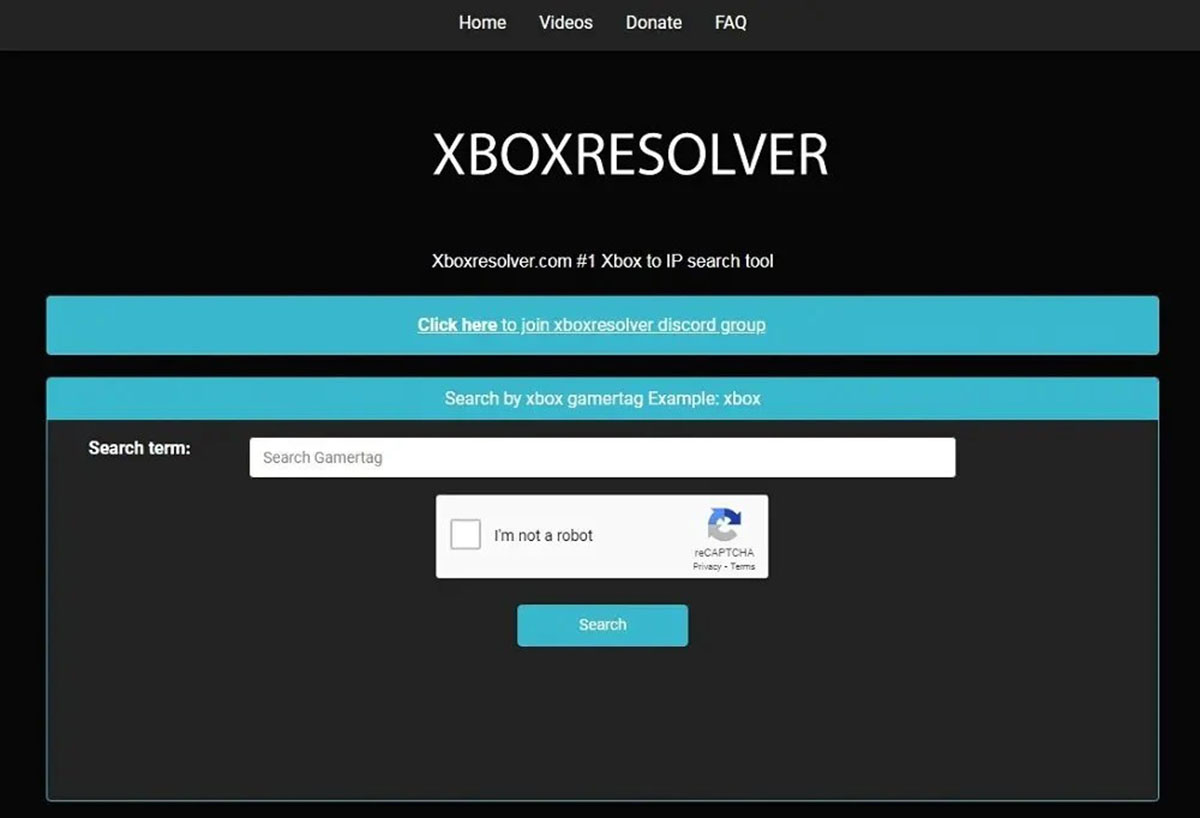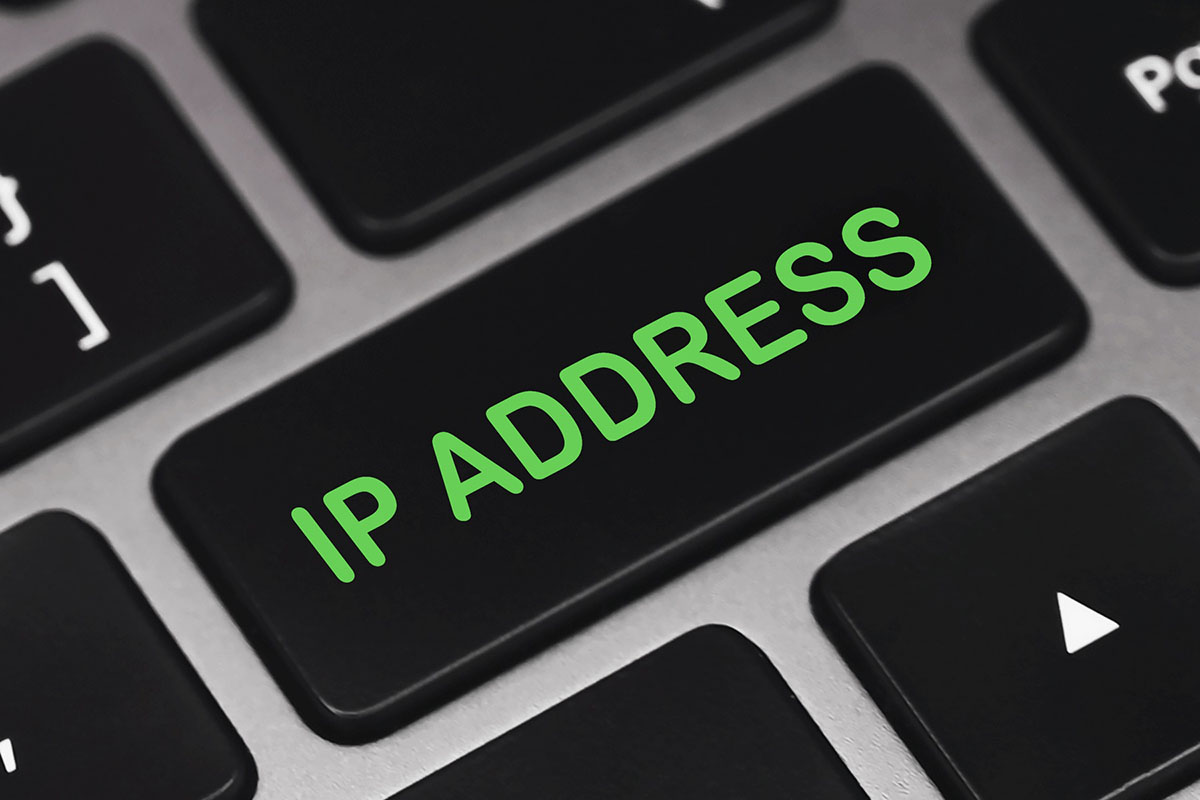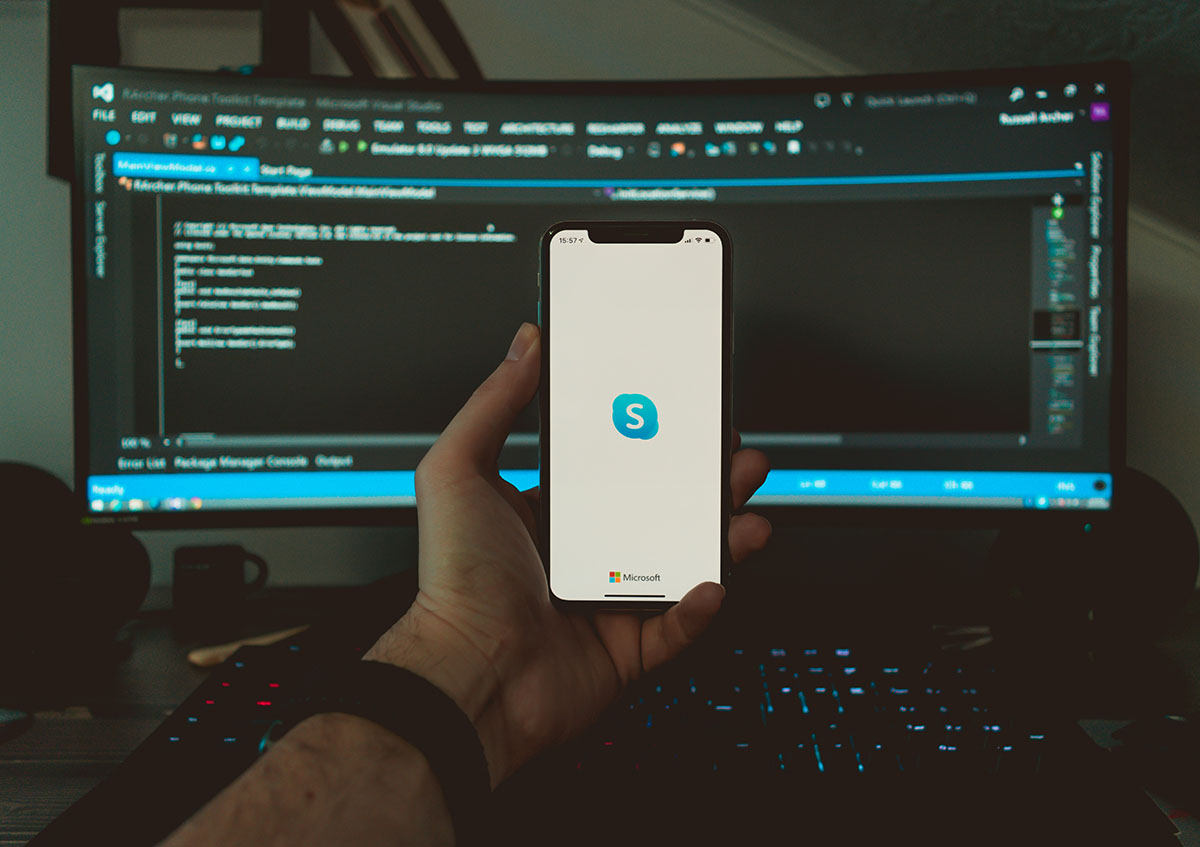Introduction
With the advancement of technology and the increasing interconnectedness of our lives, the security and privacy of our online presence have become paramount. In this digital age, the concept of IP addresses has gained significant importance. An IP address, or Internet Protocol address, is a unique numerical identifier assigned to every device connected to the internet. It serves the purpose of facilitating communication and enabling data transfer between devices.
While IP addresses are meant to ensure smooth internet connectivity, they can also be used to gather information about individuals. This has led to a growing interest in learning how to pull someone’s IP address. However, it is crucial to understand the legal and ethical considerations involved in such endeavors.
This article aims to provide insight into the concept of IP addresses, explore the reasons why one might want to pull someone’s IP address, and discuss the legal and ethical considerations. It will also delve into various methods that can be used to accomplish this task, ensuring that readers are aware of the potential risks and consequences.
Please note that the intention behind discussing these methods is to raise awareness and promote a responsible approach towards cybersecurity. It is essential to respect privacy and adhere to legal guidelines while navigating the online world.
Now, let’s dive deeper into the world of IP addresses and explore why someone might want to obtain this information.
Understanding IP Addresses
Before diving into the methods of pulling someone’s IP address, it is essential to have a basic understanding of what an IP address is and how it functions.
In simple terms, an IP address is a unique numerical identifier assigned to every device connected to a network, whether it’s a computer, smartphone, or any other internet-enabled device. It serves as the device’s virtual address, allowing it to send and receive data over the internet.
There are two types of IP addresses: IPv4 (Internet Protocol version 4) and IPv6 (Internet Protocol version 6). IPv4 addresses consist of four sets of numbers, separated by periods, ranging from 0 to 255 (e.g., 192.168.1.1). IPv6, on the other hand, is a newer addressing system that features longer, alphanumeric addresses.
IP addresses are assigned by Internet Service Providers (ISPs) or network administrators, either dynamically (where the address changes periodically) or statically (where the address remains the same). This unique identifier enables devices to connect, communicate, and exchange data with other devices within the same network or across different networks.
In addition to facilitating communication, IP addresses also provide information about the location of a device. Through a process called Geolocation, the IP address can reveal the general area where the device is connected to the internet. This information is often used for targeted advertising, content localization, and security purposes.
It is important to note that IP addresses are not directly linked to specific individuals. They are tied to devices and networks, making it challenging to pinpoint the exact person behind a particular IP address without additional information.
Now that we have a basic understanding of what an IP address is, let’s explore the motivations behind wanting to pull someone’s IP address and the ethical considerations associated with this endeavor.
Why Would You Want to Pull Someone’s IP Address?
There can be several reasons why someone might want to pull someone’s IP address. It is important to note that the intent behind obtaining this information can vary, ranging from legitimate purposes to potentially malicious intentions. Let’s explore some of the common motivations:
- Network Troubleshooting: One legitimate reason to pull someone’s IP address is for network troubleshooting. When experiencing connectivity issues or suspicious activities on a network, network administrators may want to trace the source of the problem by identifying the IP address of the device causing the issue.
- Cybersecurity Investigations: Law enforcement agencies or cybersecurity professionals may need to investigate cybercrimes or unauthorized access to networks. Pulling someone’s IP address can be a part of the investigative process in order to identify potential suspects or gather evidence.
- Protection Against DDoS Attacks: DDoS (Distributed Denial of Service) attacks can be detrimental to businesses and individuals alike. In some cases, identifying the source IP address responsible for launching the attack can enable targeted mitigation efforts and help protect against future attacks.
- Online Gaming: In the world of online gaming, conflicts and disputes can arise. Some players may resort to pulling someone’s IP address to report cheaters, monitor suspicious activities, or gather evidence of unfair gameplay.
- Personal Investigation: While not encouraged, some individuals may want to pull someone’s IP address for personal reasons. This can include tracking the online activities of a suspicious individual, monitoring for potential threats, or gathering information to confront someone who is engaging in harmful or harassment behavior.
It is important to approach the act of pulling someone’s IP address with caution and ensure that it aligns with legal and ethical guidelines. Next, we will discuss the legal and ethical considerations that must be taken into account when attempting to obtain someone’s IP address.
Legal and Ethical Considerations
When it comes to pulling someone’s IP address, it is crucial to navigate this process with utmost respect for legal and ethical considerations. While the motivations behind obtaining an IP address may vary, it is important to ensure that privacy rights are respected and any action taken is in compliance with the law. Here are some key points to consider:
- Privacy Laws: Different countries have different privacy laws and regulations that dictate how personal information, including IP addresses, can be collected and used. It is essential to familiarize oneself with the applicable laws of the jurisdiction and ensure that any action taken is within legal boundaries.
- Consent: In most cases, obtaining someone’s IP address without their consent is generally considered unethical and may even be illegal. It is important to have proper authorization or a legal basis for collecting and using someone’s IP address.
- Legitimate Purpose: It is crucial to have a legitimate reason for wanting to pull someone’s IP address. This can include network troubleshooting, cybersecurity investigations, or protecting against potential threats. Any action taken should be in line with the intended purpose and not used for malicious intent.
- Professional Conduct: For professionals in the field of cybersecurity, law enforcement, or network administration, it is important to adhere to professional codes of conduct and ethical guidelines. This includes being transparent, accountable, and ensuring that actions taken are within the scope of one’s professional responsibilities.
- Mitigating Harm: While the desire to pull someone’s IP address may stem from concerns or suspicions, it is important to strike a balance between protecting oneself and mitigating potential harm. It is advised to report any incidents or concerns to the appropriate authorities or professionals who can handle the situation legally and ethically.
By considering these legal and ethical considerations, individuals can ensure that their actions are responsible, respectful, and aligned with legal requirements. In the next section, we will explore various methods that can be used to pull someone’s IP address, along with their associated risks and limitations.
Methods to Pull Someone’s IP Address
When it comes to pulling someone’s IP address, there are several methods that can be employed. It is important to note that these methods may not always be legal or ethically acceptable, and should only be used for legitimate purposes with proper authorization. Here are some commonly used methods:
- Email Header Analysis: By examining the header of an email, it is possible to find the IP address from which the email was sent. However, this method may not provide accurate information if the sender has used anonymizing techniques or email services that hide the original IP address.
- Using Social Engineering: Social engineering involves manipulating individuals into divulging information. This technique can be used to trick someone into revealing their IP address, although it should be noted that social engineering is both unethical and likely illegal.
- Extracting IP from Chat Logs or Messaging Apps: Some chat logs or messaging apps may include IP address information within the metadata of the conversation. However, accessing this information typically requires legal authorization or technical expertise.
- Website Traffic Analysis: Website owners can analyze their server logs to extract IP addresses of visitors. However, this method is only applicable if you have control or access to the website’s server logs, and it is crucial to respect privacy laws and obtain proper consent.
- Utilizing a Tracking Link: By creating a customized tracking link and enticing someone to click on it, it is possible to obtain their IP address. However, using tracking links without proper consent is a violation of privacy rights and should be avoided.
- Creating a Phishing Page: Phishing involves creating a fake login page to trick individuals into entering their credentials. This method can potentially collect IP addresses alongside other sensitive information. However, phishing is illegal and highly unethical.
- IP Logger Services: IP logger services allow individuals to create links that will log the IP addresses of those who click on them. While these services may have legitimate uses, it is important to always ensure proper consent and compliance with privacy laws.
It is crucial to approach these methods with caution, as they can potentially violate privacy laws and ethical boundaries. It is advised to seek legal advice or consult with professionals in relevant fields before attempting to pull someone’s IP address using any of these methods.
Next, we will explore how you can protect your own IP address and maintain your privacy and security online.
Method 1: Email Header Analysis
Email header analysis is a method that can be used to extract an IP address from the headers of an email. Every email sent contains a set of headers that provide information about the sender, recipient, and the routing of the email. By examining these headers, it is possible to identify the IP address from which the email originated. Here is a breakdown of the steps involved in email header analysis:
- Open the email in question: Start by opening the email that you want to analyze. Most email clients have an option to view the email headers, usually referred to as “show original” or “view message source.”
- Locate the headers: Once you have accessed the email headers, you will see a series of lines containing technical information. Look for the lines that start with “Received:” or “X-Originating-IP:”. These lines typically contain IP addresses that can help identify the sender’s location.
- Analyze the headers: Carefully review the headers and identify the most recent “Received:” line. This line will indicate the IP address of the server that received the email from the sender. Keep in mind that each server in the routing process might have its own “Received:” line, and the IP address closest to the top of the headers is usually the most relevant.
- Trace the IP address: Once you have identified the IP address, you can use various online tools or services to trace it. These tools can provide information about the general location, Internet Service Provider (ISP), and other details associated with the IP address. However, it is important to note that IP addresses alone do not provide specific identification of an individual.
It is crucial to mention that email header analysis has its limitations. In some cases, the original IP address may be obfuscated or hidden due to the use of proxy servers or anonymizing services. Additionally, IP addresses can be easily spoofed or manipulated, making it difficult to rely solely on email headers for accurate identification.
Furthermore, it is important to approach email header analysis with caution and respect privacy laws. Ensure that you have a legitimate reason and proper authorization to analyze email headers. It is recommended to consult with legal professionals or experts in the field to ensure compliance with legal and ethical guidelines.
Now that we have discussed email header analysis, let’s explore the next method – using social engineering to obtain someone’s IP address.
Method 2: Using Social Engineering
Social engineering is a method that involves manipulating individuals to gain access to confidential information, including IP addresses. It exploits human psychology and vulnerabilities to trick individuals into revealing private information. It is crucial to note that social engineering is both unethical and likely illegal, as it involves deception and unauthorized access.
Here are some common social engineering techniques that may be used to obtain someone’s IP address:
- Pretexting: Pretexting involves creating a plausible scenario or pretext to gain the trust of the target and elicit sensitive information. This could include posing as a technical support representative, a colleague, or a trusted individual who needs the target’s IP address for legitimate reasons.
- Phishing: Phishing is a technique where attackers create fake websites or emails that mimic legitimate ones in order to trick individuals into divulging personal information, including IP addresses. Phishing attacks often disguise themselves as reputable organizations, such as banks or social media platforms, and prompt individuals to enter their login details or other sensitive information.
- Baiting: Baiting involves enticing individuals with something valuable or appealing, such as free Wi-Fi access or a fake survey, in exchange for their IP address. This technique relies on the target’s curiosity or desire to obtain something for personal gain.
- Tailgating: Tailgating, also known as piggybacking, involves gaining physical access to restricted areas by closely following an authorized individual. In some cases, attackers may use this technique to gain access to devices or networks, potentially obtaining IP addresses in the process.
- Impersonation: Impersonation involves posing as a trusted individual or authority figure to manipulate the target into revealing sensitive information. This could include pretending to be a coworker, a manager, or a support representative who needs the target’s IP address for legitimate purposes.
It is important to stress that social engineering is considered unethical and potentially illegal. It not only violates privacy rights but also undermines trust and can lead to severe consequences for both the attacker and the victim.
It is crucial to emphasize the importance of cybersecurity awareness and education to prevent falling victim to social engineering attacks. Individuals should be cautious when sharing personal information, verifying the authenticity of requests, and reporting any suspicious activity.
Now that we have explored the social engineering method, let’s move on to the next section and discuss extracting IP addresses from chat logs or messaging apps.
Method 3: Extracting IP from Chat Logs or Messaging Apps
Extracting IP addresses from chat logs or messaging apps can be another method employed to obtain someone’s IP address. In some cases, chat logs or messaging apps may include metadata that contains IP address information. However, accessing this information may require technical expertise or legal authorization, and it is essential to respect privacy laws and user consent.
Here are some steps involved in extracting IP addresses from chat logs or messaging apps:
- Access the chat logs: Obtain access to the chat logs or messaging app where you suspect the IP address information may be present. This could be through direct access to the device used for the conversations or through authorized access to the chat service provider’s data if legally permitted.
- Identify the relevant information: Analyze the chat logs for any metadata that may contain IP address information. Look for specific details or timestamps associated with each conversation or message that may provide hints about the involved IP addresses.
- Extract the IP addresses: If you have identified relevant information in the chat logs, attempt to extract the IP addresses from the metadata. This may involve using specialized tools or scripts to parse the data and extract the IP address information. It is important to note that this process requires technical knowledge and expertise.
- Analyze the IP addresses: Once the IP addresses have been extracted, you can use online tools or services to analyze and gather information about the IP addresses. This can include details about the geographical location, ISP, and potentially other identifying information. However, keep in mind that IP addresses alone do not provide specific identification of an individual.
It is vital to approach the extraction of IP addresses from chat logs or messaging apps with caution and ensure compliance with privacy laws and user consent. Unauthorized access to someone’s chat logs or messaging apps can be a violation of privacy rights and may have legal consequences.
It is recommended to consult with legal professionals or experts in the field to ensure compliance with legal guidelines and ethical considerations. Respecting privacy and obtaining proper authorization are essential in any attempt to handle sensitive information, including IP addresses.
Now that we have discussed extracting IP addresses from chat logs or messaging apps, let’s explore another method – website traffic analysis.
Method 4: Website Traffic Analysis
Website traffic analysis is a method that involves analyzing server logs or website analytics to extract IP addresses of visitors. This method can be used to obtain the IP addresses of individuals who have interacted with a particular website. However, it is important to note that website traffic analysis should be done in compliance with privacy laws, with proper consent, and within the bounds of ethical considerations.
Here are the steps involved in website traffic analysis:
- Access server logs or website analytics: Gain access to the server logs or website analytics of the website where you want to extract IP addresses. This may require having administrative access to the website or obtaining authorized access from the website owner or administrator.
- Identify the IP addresses: Analyze the server logs or website analytics to identify the IP addresses of the visitors to the website. Look for entries that contain information related to the IP address, timestamp, and the specific web pages accessed.
- Analyze the IP addresses: Once you have identified the IP addresses, you can utilize online tools or services to analyze the IP addresses further. This can provide information about the approximate geographical location, ISP, and other details associated with the IP addresses. Remember that IP addresses do not directly identify individuals.
- Respect privacy and legal obligations: It is crucial to handle website traffic analysis with respect for privacy laws and user consent. Ensure that you have the necessary authorization and compliance with legal guidelines before accessing and analyzing server logs or website analytics.
- Protect the privacy of visitors: If you are the website owner or administrator, it is important to inform visitors about the collection and use of their IP addresses within your privacy policy. Implement appropriate security measures to protect the privacy and security of visitor data.
It is essential to approach website traffic analysis responsibly and ethically. Respect privacy rights, comply with legal requirements, and ensure transparency in data collection and usage. Any action taken should be in line with the intended purpose, and individuals should be aware of how their data, including IP addresses, is being handled.
Now that we have discussed website traffic analysis, let’s move on to the next method – utilizing a tracking link to obtain someone’s IP address.
Method 5: Utilizing a Tracking Link
Utilizing a tracking link is a method that involves creating a customized URL that can log the IP addresses of those who click on it. This method can potentially be used to obtain someone’s IP address, but it is important to note that using tracking links without proper consent or for malicious purposes is a violation of privacy rights and unethical.
Here is how this method works:
- Create a tracking link: Generate a tracking link using a URL shortening service or a dedicated tracking platform. These services allow you to mask the actual destination URL and track information such as clicks and IP addresses of those who interact with the link.
- Entice someone to click on the link: Share the tracking link with the target individual and encourage them to click on it. This could be done through social engineering techniques, persuasive messaging, or offering something of value.
- Extract the IP address: Once the target individual clicks on the tracking link, the tracking service or platform will log their IP address. You can then access the tracking report or dashboard to obtain the recorded IP addresses.
- Respect privacy and legal obligations: When utilizing tracking links, it is crucial to respect privacy laws and obtain proper consent from individuals whose IP addresses you intend to track. Ensure transparency and provide clear information about the purpose of the tracking link and how the collected data will be used.
- Use tracking links responsibly: Tracking links may have legitimate uses, such as monitoring website traffic, analyzing marketing campaigns, or tracking the effectiveness of online advertisements. However, always ensure that you are using tracking links for lawful and ethical purposes and complying with applicable laws and regulations.
It is important to emphasize that the utilization of tracking links to obtain someone’s IP address without proper consent or for malicious purposes is considered a violation of privacy rights and unethical behavior. Respect for privacy, consent, and responsible data collection practices are vital in the digital realm.
Now that we have discussed the use of tracking links, let’s move on to the next section and explore the method of creating a phishing page to obtain someone’s IP address.
Method 6: Creating a Phishing Page
Creating a phishing page is a method used to trick individuals into entering their login credentials or personal information on a fake website that resembles a legitimate one. While this method can potentially gather IP addresses alongside other sensitive information, it is essential to note that phishing is illegal and highly unethical.
Here is an overview of the process involved in creating a phishing page:
- Choose the target website: Select a website that you want to mimic with your phishing page. This is usually a popular website that individuals are likely to log into, such as a social media platform, an online banking service, or an email provider.
- Create the phishing page: Design a fake webpage that closely resembles the target website. Pay attention to the visual elements, layout, and overall appearance to ensure the phishing page looks convincingly authentic.
- Obtain a domain: Acquire a domain name that closely resembles the target website’s domain. This is done to make the phishing page’s URL appear legitimate when shared with the intended victims.
- Host the phishing page: Set up a server or hosting service to host the phishing page. This is where the captured information, including IP addresses, will be sent once individuals submit their credentials on the fake webpage.
- Distribute the phishing page: Disguise the phishing page as a legitimate link and distribute it to the targeted individuals, usually through email, social media, or other messaging platforms. The goal is to deceive victims into clicking on the link and entering their information on the fake webpage.
- Extract and analyze the gathered data: Once individuals fall for the phishing attempt and submit their information on the fake webpage, the captured data, including IP addresses, is sent to the server or hosting service. The collected information can then be analyzed for various purposes.
Creating a phishing page is illegal and unethical, as it involves deception, unauthorized access, and potential identity theft. Engaging in phishing activities can result in severe legal consequences and significant harm to individuals targeted by such attacks.
It is crucial to raise awareness about phishing attacks and educate individuals on how to identify and protect themselves against them. Always uphold ethical standards and respect privacy rights in all online activities.
Now that we have explored the phishing method, let’s move on to the next section and discuss IP logger services.
Method 7: IP Logger Services
IP logger services are online platforms or tools that enable individuals to create specially crafted links that can capture and log the IP addresses of those who click on them. While these services may have legitimate uses in certain contexts, it is crucial to use them responsibly, with proper consent, and in compliance with privacy laws.
Here is an outline of the process involved in using IP logger services:
- Select an IP logger service: Choose a reputable IP logger service that provides the functionality you require. There are various online platforms and tools available that offer IP logging features.
- Create an IP logging link: Use the IP logger service to create a customized tracking link. This link will typically redirect individuals to the desired destination while also capturing and logging their IP addresses.
- Distribute the IP logging link: Share the IP logging link with the individuals whose IP addresses you intend to capture. This could be done through messaging platforms, email, or any other means of communication that allows the recipient to click on the provided link.
- Access the IP logging data: Once individuals click on the IP logging link, the IP logger service will record and store their IP addresses. You can then access the logs provided by the service to retrieve the captured IP address data.
- Ensure privacy and consent: It is essential to respect privacy laws and obtain proper consent from individuals whose IP addresses you intend to track. Be transparent about the purpose of the tracking link and how the collected data will be used.
- Use IP logger services responsibly: IP logger services can be useful in certain scenarios, such as monitoring website traffic, analyzing marketing campaigns, or tracking the effectiveness of online advertisements. Always ensure that you utilize these services for lawful and ethical purposes, and comply with applicable laws and regulations.
While IP logger services can provide insights into user activity and gather IP address data, it is important to handle them responsibly and with respect for individuals’ privacy rights. Proper consent, transparency, and compliance with legal and ethical considerations are paramount when utilizing IP logger services.
It is recommended to consult with legal professionals or experts in the field to ensure compliance with legal guidelines and ethical practices. Always prioritize privacy and data protection, respecting the rights and interests of individuals.
Now that we have discussed IP logger services, let’s move on to the importance of protecting your own IP address and maintaining online privacy.
Protecting Your Own IP Address
Protecting your own IP address is essential for safeguarding your online privacy and security. By taking proactive measures, you can minimize the risk of your IP address falling into the wrong hands or being misused. Here are some key steps you can take to protect your IP address:
- Use a Virtual Private Network (VPN): A VPN encrypts your internet traffic and routes it through a remote server, effectively masking your IP address. It adds an extra layer of security and anonymity, especially when using public Wi-Fi networks or accessing sensitive information online.
- Configure your router’s firewall: Ensure that your home or office router is configured with a robust firewall. This helps filter and monitor incoming and outgoing network traffic, providing an added layer of protection against potential threats or unauthorized access.
- Keep your devices and software up to date: Regularly update your operating system, applications, and security software to minimize vulnerabilities that could be exploited to track or compromise your IP address.
- Be cautious with your online activities: Practice safe browsing habits and be cautious about the websites you visit and the links you click on. Avoid suspicious websites or downloading files from untrusted sources, as they may contain malware or trackers that could compromise your IP address.
- Use private browsing mode: When browsing the internet, consider using private or incognito mode in your web browser. This mode restricts the storage of cookies, temporary files, and browsing history, providing a limited trail of your online activities and reducing the chances of being tracked.
- Avoid publicly sharing your IP address: Be mindful of who you share your IP address with, as it can be used to track your online activities. Avoid sharing your IP address on public forums, social media platforms, or any other public platforms where it could be easily accessed by unauthorized individuals.
- Regularly review privacy settings: Take the time to review the privacy settings of the applications and online services you use. Adjust the settings to limit the amount of personal information that is shared and minimize the exposure of your IP address.
- Enable two-factor authentication (2FA): Implement 2FA whenever possible, especially for important online accounts. Two-factor authentication adds an extra layer of security by requiring an additional verification step, such as a temporary code sent to your mobile device, when accessing your accounts.
By implementing these measures, you can significantly enhance the security and privacy of your IP address, reducing the potential risks associated with online activities. It is important to stay vigilant and stay informed about emerging threats and best practices for IP address protection.
Now that we have discussed methods to protect your IP address, let’s recap the key points covered in this article.
Conclusion
Understanding IP addresses and the methods associated with pulling someone’s IP address can be vital knowledge in today’s digital landscape. However, it is crucial to approach these practices responsibly, adhering to legal and ethical considerations.
In this article, we explored the concept of IP addresses and their significance in facilitating internet communication. We discussed various motivations behind wanting to pull someone’s IP address, including network troubleshooting, cybersecurity investigations, and personal safety concerns. We also emphasized the importance of respecting privacy laws and obtaining proper consent.
We explored several methods for pulling someone’s IP address, such as email header analysis, social engineering, chat log analysis, website traffic analysis, utilizing tracking links, creating phishing pages, and employing IP logger services. It is important to note that some of these methods are illegal, unethical, or both.
We also highlighted the significance of safeguarding your own IP address. By utilizing tools like virtual private networks (VPNs), configuring firewalls, and practicing safe browsing habits, you can enhance your online privacy and security.
Overall, the key takeaway is to prioritize privacy, security, and ethical practices in the digital realm. It is essential to be aware of the legal implications and potential consequences associated with pulling someone’s IP address without proper authorization. Respecting privacy rights, obtaining consent, and ensuring compliance with applicable laws are fundamental principles to adhere to.
By maintaining a responsible approach to IP address-related activities and prioritizing cybersecurity, we can navigate the online world with integrity and protect both our own information and the digital ecosystem at large.

























